
In September 2022 Oxbow's bookshop and distribution buisness merged with Pen & Sword Books, a family run independent publisher of history books. The book distribution aspect of our business will continue to bring you some of the best books in the field of archaeology and related disciplines as Casemate UK. The Oxbow Books publishing imprint remains as a separate entity, still sold and distributed exclusively by us.
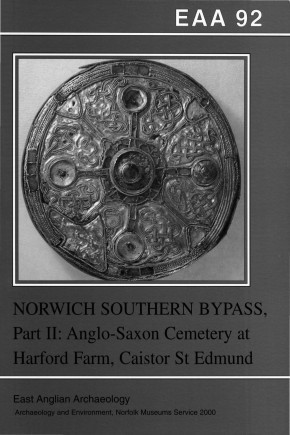
Format: Paperback
Pages: 137
ISBN: 9780905594309
Pub Date: 31 Dec 2000
Imprint: East Anglian Archaeology
Series: East Anglian Archaeology Monograph
Illustrations: 97 b/w figs, 25 b/w pls, tbs
Description:
The Anglo-Saxon cemetery at Harford Farm consisted of two groups of late 7th-century inhumation burials surviving only as stains within a prehistoric barrow cemetery. Of the thirty-one graves grouped on a bluff overlooking the river, most contained either unaccompanied burials or burials with just knife and buckle; but three, all probably female, were lavishly equipped. The fifteen graves further south, loosely arranged around a prehistoric barrow, were mostly 'knife and buckle' burials, but one was more richly furnished.
The character of the grave-goods and the manner of burial are typical of 'late or 'Final Phase cemeteries. Although similarity of grave-goods suggests that the two groups of graves were contemporary, there may have been some significant differences in burial rite, coffins predominating in one group and burials in the other group resting on mats of organic material.
Pyrrhonian Inquiry
Format: Paperback
Pages: 72
ISBN: 9780906014240
Pub Date: 31 Dec 2000
Description:
"Pyrrhonian scepticism tells us that answering is not a feature of philosophy in general but a feature of dogmatism." "The Pyrrhonist keeps on inquiring but his inquiry never ends with a result." "Pyrrho had difficulty coping with life by himself and needed to rely on the judgement of others" Every sentence in this book is a gem!
It is based on the author's PhD.
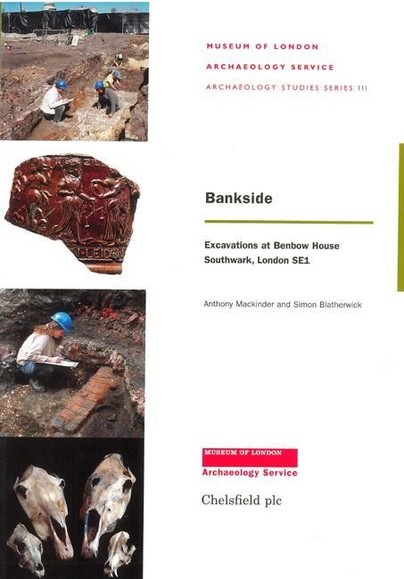
Format: Paperback
Pages: 68
ISBN: 9781901992120
Pub Date: 01 Dec 2000
Series: MoLAS Monograph
Illustrations: 35 b/w figs, 6 tables
Description:
The multi-period site of Benbow House lies next to the Thames, and is a fine example of the multifarious and colourful activities that took place in London over the centuries. The earliest extant evidence of human activity within the excavation area was an attempt at land consolidation in the 12th or 13th century. This was followed by three periods of building from the 13th century onwards.
Nine or ten buildings can be dated to the 13th and 14th centuries, and probably included the remains of 'stews' - inns or brothels known from documentary sources. Further buildings were constructed in the 16th and 17th centuries, including a possible animal-baiting arena. The final phase of the excavated evidence included the remains of 18th- and 19th-century brick buildings reflecting the later use of the site as a foundry and metalworks.

Format: Paperback
Pages: 224
ISBN: 9781842170359
Pub Date: 01 Dec 2000
Series: University of Southampton Department of Archaeology Monograph
Illustrations: many b/w figs
Description:
Southern Spain's archaeological record is a rich one but for the Roman period archaeological research has yielded limited results. The major settlement of Penaflor, the site of ancient Cleti, was selected for excavation for its good epigraphic and historical record and its excellent uncluttered stratigraphic sequence. The excavations aimed to establish, amongst other things, the date and cultural context for the first establishment of the site, the site'ss regional context and the Romanisation of the town during the late Republican period.
This book, which is part of a wider programme of publication, is intended to provide an overview of the project as a whole but excludes some of the more detailed analyses and appendices which are accessible in a University of Southampton web page.

Format: Paperback
Pages: 300
ISBN: 9781842170144
Pub Date: 01 Dec 2000
Description:
Neo-Darwinism is becoming an increasingly important influence on archaeological theory, as a number of recently edited books on `Darwinian archaeologies' make clear. However, many of these volumes are internationally inconsistent and reflect the muddled understanding many archaeologists have of the potential of Darwin's thought for interpreting material culture. Ben Cullen's book starts by critiquing some recent neo-Darwinist approaches, including cultural evolutionism and cultural sociobiology.
He then presents a neo-Darwinian paradigm of extreme power, which he has termed the Cultural Virus Theory (CVT). This focuses on explaining the transmission of ideas by comparing cultural memes wit natural genes. In the final section he takes the important step of applying this theory to real materials; demonstrating how CVT can be used to understand the spread of megalithic monuments in prehistoric North-West Europe, the diffusion of the renaissance in medieval Europe and the basis of stylistic change in pottery. Tragically this collection of brilliant thoughts is published posthumously. Ben Cullen was close to finishing a major book when he died suddenly in 1995 and his writings have been gathered into a consistent whole by James Steele, Richard Cullen and Christopher Chippendale.

Format: Paperback
Pages: 76
ISBN: 9781900188739
Pub Date: 01 Dec 2000
Series: Archaeology Data Service & Digital Antiquity Guides to Good Practice
Description:
A straightforward guide which provides advice on preparing and depositing digital archives which also includes recommendations for archive curators and collecting agencies and copyright considerations. The book contains practical information and guidelines for depositing an archive with the Archaeological Data Service and the principals behind archiving archaeological data in a digital form.

Format: Paperback
Pages: 154
ISBN: 9780947816513
Pub Date: 01 Dec 2000
Illustrations: (A Tschan & P Daly). 154p, b/w illus, tbs
Description:
These nine papers, based on the 4th World Archaeological Congress held in South Africa in 1999, take a critical view of computer usage in archaeology and study its impact on the discipline and especially in terms of archaeological method and theory. Contents: Introduction (Gark Lock & Kayt Brown) ; Computers and archaeological cultural change (J Huggett) ; Archaeological computing and disciplinary theory (J Gidlow) ; Mathematics and computers (H Forsyth) ; Virtual reality (G Goodrick & M Gillings) ; Archaeological archives for the 21st century (F Grew) ; Intellectual excavation (A Beck) ; English sites and monuments records (B Robinson) ; Can computers help aerial survey? (R Palmer) ; Is there such a thing as `Computer Archaeology'?

Format: Hardback
Pages: 526
ISBN: 9789602133996
Pub Date: 01 Dec 2000
Imprint: Ekdotike Athenon
Description:
God, Man, and the world have always been, and are still today, the constant unchanging focus of humankind's spiritual concerns, marking the civilization which the people of the globe have inherited with its own particular features. But it has been Christianity, able to rise above those persistent concerns through the ages, that has revealed the true relationship between God, Man and the world, and has clothed it in the Greek language and with Greek ideas. As we view Christianity's progress in the world, two thousand years after the incarnation of God the Word, we can see very clearly that the holy fountain of all Christendom has always been Orthodoxy.
Developing impressively in the Eastern regions of the then civilized world, where the strata of humankind were fertile in religious visions, Orthodoxy was to give shape and definition to its spiritual majesty through the thousand years of the Byzantine Empire, in order that it might live out its glory to the present day -a glory steeped in the blood of the Cross.
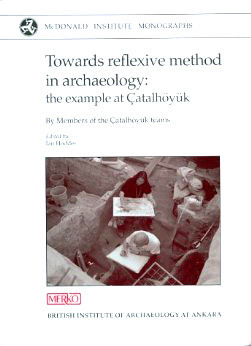
Format: Hardback
Pages: 300
ISBN: 9781902937021
Pub Date: 01 Dec 2000
Series: McDonald Institute Monographs
Illustrations: b/w pls
Description:
In the early 1990s the University of Cambridge reopened excavations at the Neolithic site of Catalhöyuek in central Turkey, abandoned since the 1960s. In this volume, Ian Hodder explains his vision of archaeological excavation, where careful examination of context and an awareness of human bias allows researches exciting new insights into prehistoric cognition. The aim of the volume is to discuss some of the reflexive or postprocessual methods that have been introduced at the site in the work there since 1993.
These methods involve reflexivity, interactivity, multivocality and contextuality or relationality.

Format: Hardback
Pages: 182
ISBN: 9788788415032
Pub Date: 31 Oct 2000
Illustrations: illus
Description:
Under the auspices of the British Museum, C.T. Newton started excavations in 1857 on the site of one of the Seven Wonders of the World, the sepulchral monument to the Carian ruler, Maussollos.
Sensational finds were made of sculptures in round and reliefs, but less attention was paid to the architectural remains of the superstructure, and afterwards it was made clear that supplementary investigations on the site would be needed, if a more complete and reliable reconstruction of the building was to be hoped for than that suggested by Newton and his collaborators. This volume describes the foundations of the Mausolleion laid within the large, rectangular cutting in the bedrock and named "the quadrangle" by Newton. In addition to architectural evidence of basic importance, its re-excavation by the Danish expedition in the years 1970-77 brought to light remains of Maussollos' tomb chamber and its treasures, among these the ornaments of gold plate and beads of semi-precious stones published in the present volume. The illustrations include a plan of the re-excavated foundations; elevations of cross-sections describing the principal features of the excavated area; excavation photos; and a plot plan of the principle levels.
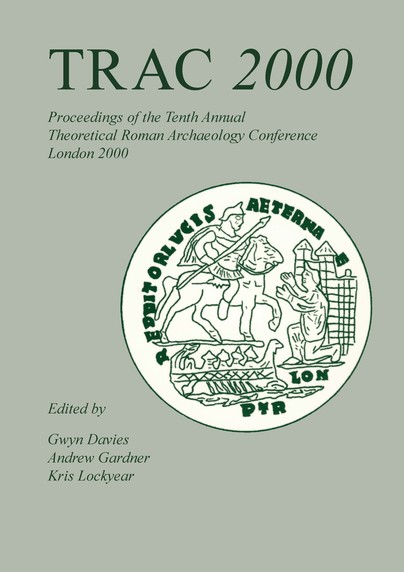
Format: Paperback
Pages: 176
ISBN: 9781842170434
Pub Date: 31 Jan 2000
Series: TRAC
Illustrations: b/w illus
Description:
This book contains thirteen papers on Roman archaeology from the tenth Theoretical Roman Archaeology Conference in London. The TRAC conference was held in April 2000, at the Institute of Archaeology and was divided into five different sessions. In the opening session, Representing Romans, the methodology of portraying the Romans to the wider world was explored.
David Clarke andFraser Hunter’s paper outlines the challenge of designing appropiate gallery displays for the new National Museum of Scotland. In his paper, Francis Grew discusses the development of Roman London. Garrick Fincham’s paper discusses the threat of overwhelming military intervention by the imperial power in colonial negotiations. Issues of ethnicity, gender, class and occupation within the later Roman army are addressed here. Miranda Green’s paper presents an important discussion of the nature of human/stag hybrids in Iron Age and Gallo-Roman iconography, and Gillian Hawkes presents an analysis of food procurement and preparation encountered in Roman Britain. Gilly Carr considers the role of body decoration and grooming, arguing that individuals in different areas of south eastern Roman Britain made different cultural choices to structure their ethnic identities. The final set of papers focused on Constructing Childhood in the Roman World, reconsidering some long-standing truisms regarding the status and treatment of children in the Roman context. John Pearce examines Roman infant burial and the role religion plays in burial ceremony.

Format: Paperback
Pages: 102
ISBN: 9780905594279
Pub Date: 31 Dec 1999
Imprint: East Anglian Archaeology
Series: East Anglian Archaeology Monograph
Illustrations: b/w figs
Description:
Three major excavations and other work in Thetford reveal settlement north of the river by AD1000, within a semi-circular defensive enclosure which probably pre-dates that south of the river, but was initially little more than a bridgehead.Occupation peaked in the 11th and 12th centuries, with a shift of people to the north bank, followed by medieval decline.The bones represent a range of domestic animals, dominated by sheep kept for wool, cattle for meat and dairy products, and then pigs.
Some stray Middle Saxon finds may hint at re-use of the Iron Age fort as an exchange/market centre.

Format: Paperback
Pages: 283
ISBN: 9781852811624
Pub Date: 31 Dec 1999
Imprint: East Anglian Archaeology
Series: East Anglian Archaeology Monograph
Illustrations: 27 pls, 158 b/w figs, tbs
Description:
The site at Ivy Chimneys, Witham, appears to have been occupied continuously throughout the Iron Age, and remained in use until the end of the Roman period. Most traces of domestic Iron Age structures were removed by ploughing, but the surviving ditches seem to indicate more than a simple farmstead. Very large, probably defensive, ditches of late Iron Age date may imply that the settlement at Ivy Chimneys was a focus of activity at that time, and a small amount of circumstantial evidence hints at a religious use for part of the site.
The nature of activity in early Roman times is unclear, although there is ample evidence for occupation of some form. The instigation of two large, long-lived, artificial depressions at this time may point towards the beginnings of Roman religious activity on the site. In the 3rd century AD a large, almost square, post-hole structure, interpreted as a Romano-Celtic temple, was constructed on the crest of the hill, and was enclosed by various ditches remnant of earlier activity. A large pond with a sophisticated water regulation system was constructed at about this time, and isolated timber columns may also have been present. A new temple appears to have been constructed in the early 4th century, represented by a continuous ditch enclosing a sub-rectangular area. An adjacent depression contained votive material and may have been used for religious ceremonies, although a pottery kiln appears to have produced only conventional material. The interpretation of a Christian phase in the mid-4th century is based on the presence of a baptismal font constructed of tile, and of a small two-celled structure, possibly a chapel. Other evidence may indirectly point to a pause in the pagan activity, but no specifically Christian portable objects were found. In the late 4th and early 5th century the site was certainly used as a pagan shrine, as attested by numerous votive offerings such as coins and pieces of jewellery. There is no evidence for the date of the final destruction of the site, but the presence of a relatively high number of Theodosian coins suggests continued activity well into the 5th century.
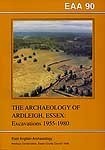
Format: Paperback
Pages: 195
ISBN: 9781852811648
Pub Date: 31 Dec 1999
Imprint: East Anglian Archaeology
Series: East Anglian Archaeology Monograph
Illustrations: 30 pls, 114 b/w figs, tbs
Description:
When mechanical ploughing was introduced on Felix Eriths farm in the 1950s, fragments of Bronze Age pottery were brought to the surface. Wherever this occurred, Erith excavated, and in 1960 he published an account of his discoveries which clearly established the importance of the Ardleigh cemetery. The pottery, with its flamboyant decoration, became the classic Deverel-Rimbury ceramic of southern East Anglia.
A prolonged campaign of aerial photography revealed an extensive cropmark landscape of ring-ditches, trackways and enclosures. Further excavations in the 1960s by Erith with the Colchester Archaeological Trust revealed an Iron Age round-house, 'Belgic burials and Roman kilns. In the 1970s investigations by the Central Excavation Unit were designed to examine the nature of the cropmark complex and to place the earlier work in context. This book describes the results of both these campaigns. It provides an illustrated corpus of Ardleigh style Deverel-Rimbury ceramics, and an account of the evidence for a rural Roman pottery production centre in the hinterland of Colchester. The nature of the cropmark landscape, and the present condition and potential of the archaeology of Ardleigh are considered.

Format: Paperback
Pages: 120
ISBN: 9781900188937
Pub Date: 01 Dec 1999
Series: Bournemouth Conservation
Description:
A volume of essays on communicating archaeology by every imaginable means provides an excellent tribute to the work of Bill Putnam - always a communicator. Learning by doing (Philip Rahtz), field archaeology in the 70s and 80s (John Hinchliffe), ignore good communication at your peril (Andrew Lawson), the IFA: what it means to be a member of a professional body (Timothy Darvill), talking to ourselves (Ellen McAdam), commissioning knowledge or making archaeology for books (Peter Kemmis Betty), arcane to ARC: the York experience (Andrew Jones), the National Curriculum (Mike Corbishley), past experience: the view from teacher education (Tim Copeland), child's play: archaeology out of school (Kate Pretty), university archaeology: ivory tower or white elephant? (Kevin Andrews) , liberal adult education in the second half of the twentieth century (Trevor Rowley), the local societies (John Manley) , archaeology in museums (Roger Peers).
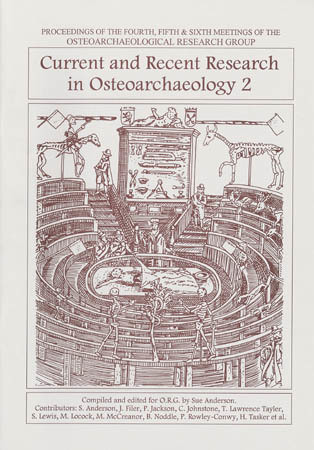
Format: Paperback
Pages: 61
ISBN: 9781900188975
Pub Date: 01 Dec 1999
Illustrations: b/w figs and pls
Description:
A collection of short papers and abstracts from the 4th, 5th and 6th proceedings of the Osteological Research Group, held in April and November 1996 and June 1997. The papers cover a wide range of subjects including technical information, evidence derived from bone assemblages and specific individual examples. Studies are presented on archaeozoology, domesticated animal bone assemblages, evidence of violence and stress indicators, measurement and statistical analysis and current research in the field of osteoarchaeology.
















